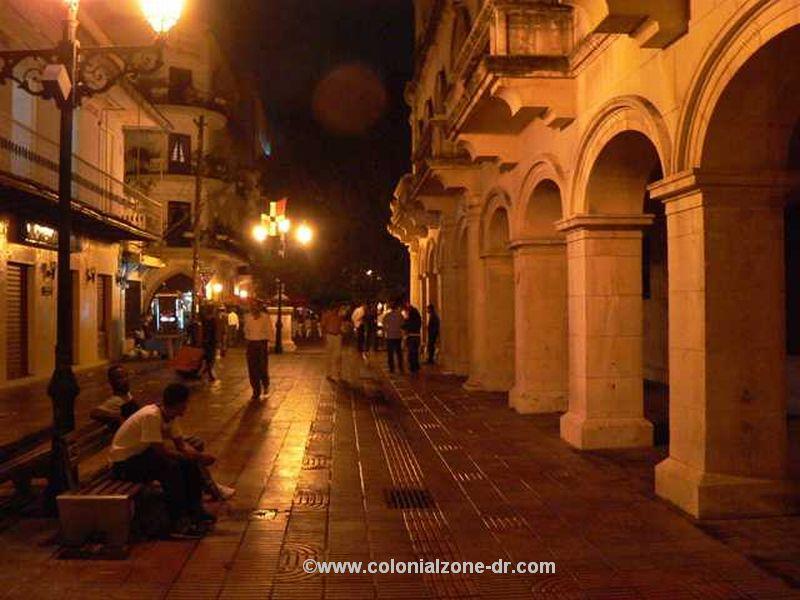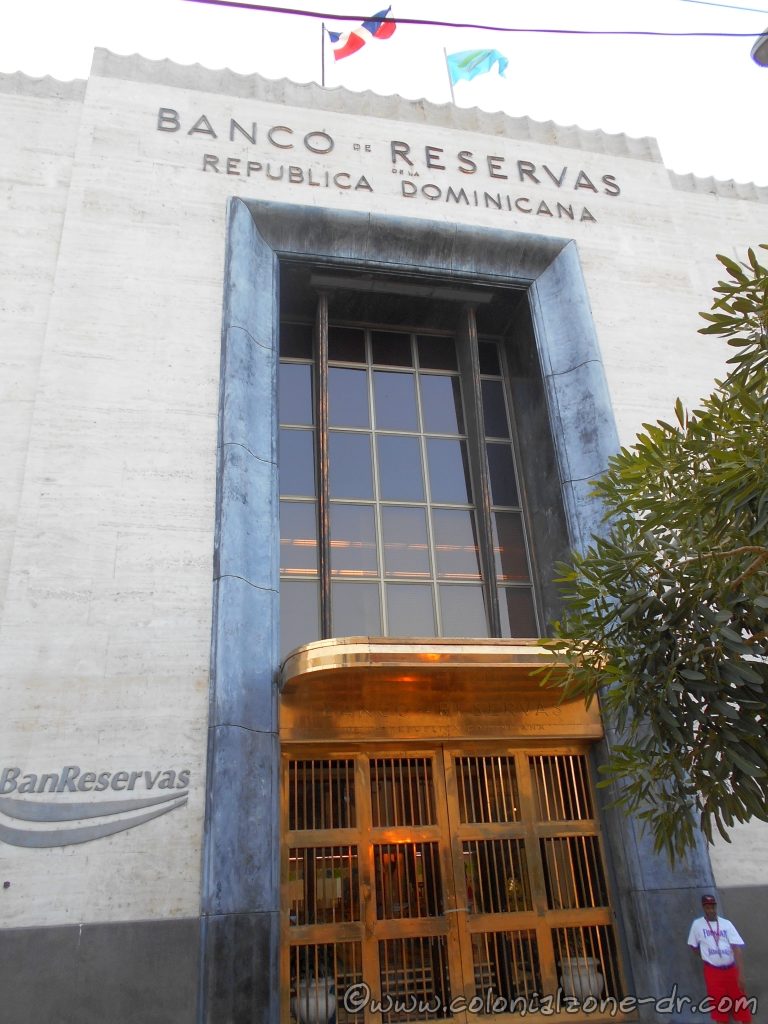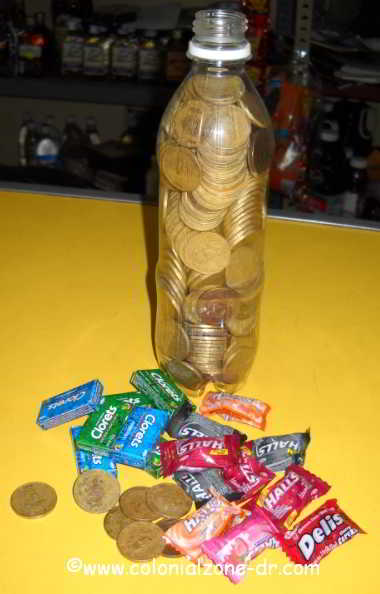Helps – Going Out & Drinking
When visiting the Dominican Republic everyone must go out and walk around and take in the scenery and culture of this island country. Make sure to have some liquid refreshments with the locals and enjoy yourself. Just make sure that you are aware of your surroundings while you enjoy.
Going out in the Day and Night
*Dominican Time. Dominicans, in general, do not view time like most people, which is typical in most tropical climates. No one moves fast unless it is in a motor vehicle. When a Dominican tells me they will be there at a certain time I always ask if that is Dominican time or North American time. Or course I say this with a laugh and receive a good laugh in return. But it is very true. When told that someone will meet you in 1 hour it very well could mean 1 hour. But most likely it means 2-3 hours, tomorrow, or maybe never. Ahora (now), Ahorita (later), have no real meaning here in the Caribbean.

*Walking at night Walking around at night, especially on the Malecon in Santo Domingo and other parts of the country is fun. The view of the Caribbean waves hitting the coral cliffs can be breathtaking. Please be aware of your surroundings. You could be walking in front of a grand hotel and the next lot or building could be an abandoned where there are no lights.

If you walk along the Malecon stay where it is well lit and where there are people. If you want to travel to different places along the road and feel uncomfortable doing this there are always taxis or if you’d feel more comfortable, the hotels can get you a taxi to move from place to place. Bad things can happen, as with any place, here or in any country. Just remember, if you wouldn’t walk in that place in your hometown don’t walk in that place here.
*Guia/ Tour Guides Tour guides can be helpful and informative. If you want to know about the history in Colonial Zone or feel better walking with a local who knows the ropes a paid guide would be the way to go.
Guides can be helpful in taking you to the sights you want to see. They can also be expensive. Always discuss the price for their services in the beginning so you can decide if it is worth it for their services. Many will say it costs nothing for them to guide you but they WILL want a tip. Generally, a guide will try to rush you make you move at a less than leisurely pace. This way they can get you to a gift shop or finish with your tour so they can help another tourist.
Visiting a gift shop with a guide can be costly. The guide will receive a little kick back from any gift shop they take you to. Your bargaining leverage will not as good in these shops when you have a guide since the shops have to pay a percentage (usually 20% of what you spend) to the guide.
Guides can be helpful in keeping bothersome beggars away. They can protect you from the bad guys also. After they take you on your tour, especially if you tip well, they will be your friend for life.

*Street dogs are everywhere. Most of these dogs are starved both for food and for love. You can feed them if you want but you take the chance of having them follow you on your entire vacation or at least while you continue your walk around town. They might tell their friend dogs about your friendliness (dog talk). You could end up with an entourage of furry friends following you wherever you go. 10 dogs following behind a group of tourists, I have seen it and it is quite funny! Dogs know who the tourists and dog-friendly people are. Really, some of the dogs are very nice and many of the neighbors take care of them and feed them. Most are very friendly and sweet and are looking for a little attention. (I adopted 2 street dogs and have helped many to find their forever homes. Read The Dominican Dog Blog to meet my dogs and some of our special local street dogs.)
Appropriate clothing for some museums and tourist places in important. Wearing shorts, miniskirts, and halter-tops in churches is not permitted. They will not permit you to enter if you are not dressed appropriately. If you plan on touring it is best to either wear pants, crop pants, or a skirt for the ladies. Men should wear a collared shirt (not sleeveless) or t-shirt. *note – many places that do not permit inappropriate dress now provide a wrap for people to use as a cover-up.
In the past Dominicans did not wear short pants in the streets except for maybe on the weekends in their own neighborhoods. They have lightened up slightly with this and you will see shorts and really short shorts but NEVER beachwear in the city streets. It is a joke here that when one wears shorts they automatically look like a tourist.
Pick pockets and thieves are watching. Don’t carry a wallet in a back pocket. Anyplace in the entire world, one should never make it easy for a pick-pocket to grab your wallet or purse. If it is possible don’t carry a purse or wallet. Just keep money in a pocket. Maybe a few different pockets in case you do get pickpocketed or robbed you will not lose everything. Spread your money around. Put a few bills in a shoe, bra, money belt, just in case.
Jewelry. When going out do not wear good jewelry. In fact, just do not wear jewelry at all. Maybe a small pair of inexpensive earrings and a ring or 2 if you really need to. But really, why make for more problems. If you do get robbed or lose something it could ruin your entire vacation. So why not just leave all the good stuff locked up in the hotel. Better yet, do not bring that stuff when you travel, this way you won’t have to worry.
Purses and Backpacks. When walking while carrying a purse or backpack try and always carry it on the side away from the road. Keeping it on the shoulder that is against a building or wall. This will make it a little more difficult for a passing motorbike rider to grab. This is something I have learned (from experience) and use no matter what country I am in.
Be aware when using public transportation. Watch for people bumping into you, standing in line close or crowding into a public car. All these places and instances are perfect for a thief. More information about Public Transportation in DR.
Limpia Bota/ Shoe Shine Boys are everywhere. I suggest that you take the time to get a shoeshine. These shoe shine people do work hard and a shine will never hurt. Usually, a shine costs around $10 to $20 pesos (and a little tip if you are pleased with the shine). One important thing. – DO NOT GIVE NON-PESO COINS TO THE STREET PEOPLE or when paying for anything. It is useless to them because no place will exchange pocket change for pesos. No exchange house will take coins. If you want to give non-Dominican pesos to someone, especially the people in the streets make sure it is the paper type.
Go out late. When going out at night to a bar to dance, drink, or people watch. Remember, Dominicans usually go out late at night after it has cooled off. This means that bars are not busy until late. Some places are empty before midnight, especially on the weekends. Take a nap and wait to go out unless you want to be the only person in the place.
Drinking – Imbibing
Hide the smell. Remember, in true Dominican fashion, if you have a drink and need to go somewhere where you don’t want the alcohol smell lingering, make sure to (as I call it “suck a Euk”). Get a Hall’s (eucalyptus) candy, called mentoehol here, at the Colmado to get rid of the smell. It is the Dominican way.
STAY HYDRATED. Drinking mass quantities of alcohol without sufficient water intake can be bad, especially in such a hot climate. Alcohol does not hydrate your body as water does.

Presidente Beer. Presidente is the favorite beer in DR. When you order make sure to specify LÑight or Regular. I always laugh. The bottle does not say “Regular”. It is either a beer or a light. Not here. You need to specify Regular or Light or usually you will get a light beer.
You should try a Presidente con Clamato (beer with clamato juice) at least once. You can see this strange mix being drunk by many Dominicans in the Colmados or while playing dominoes. Clamato is a tomato type juice with a clam taste. The ratio is in general 3 to 5 parts beer to 1 part clamato. Pour the beer into the plastic glass then add the clamato, give it a little swirl to mix and enjoy. If you are a bottle drinker take a drink to give you room in your bottle then add the clamato directly into the bottle. It takes some of the bite out of the beer. It is said that if you drink clamato with your beer you will not get drunk…don’t believe it!
For the dead. When opening a bottle of alcohol remember to pour a few drops onto the ground or floor. While doing this you must say “Por los muertos” / “For the dead”. It is a Dominican tradition to give the dead a little drink before they start enjoying themselves.
Some Brugal rum bottles are covered with a strong yellow netting, which if opened haphazardly could cause undue stress when trying to enjoy your beverage. Some bottles are not entirely covered with the netting making it easier to gain access to the smooth liquid waiting to be drunken inside the bottle. Just untie from the bottom and remove the net.

Remember, the beer is strong and it can seem stronger in the hot climate. Usually, the drinks are mixed strong in the bars. If you are going to be drinking all day (or night) try what I do. If you like beer I suggest starting with a nice cold one. Then, if you go out, switch to a mixed drink. For me rum is best. Get a bottle so you can mix it yourself if possible. In a bar is called “un servicio” which is a bottle of your choice, a mixer and a bucket of ice. This way you are able to mix your own drinks and it is also more economical. When you mix your drink mix it weak. If you are ordering by the drink tell them to mix it “suave” which means soft or not strong. This way you can last the night without any ill effects.
The dictionary of the Dominicana Gringa (written and published in my mind only) states definition – “ALCOHOL ABUSE = when you spill a glass, drop a bottle, or in any way waste your alcoholic beverage. This includes the act of spewing, disgorging, expelling, emitting or projecting. To put it bluntly throwing-up or vomiting”. LOL!












